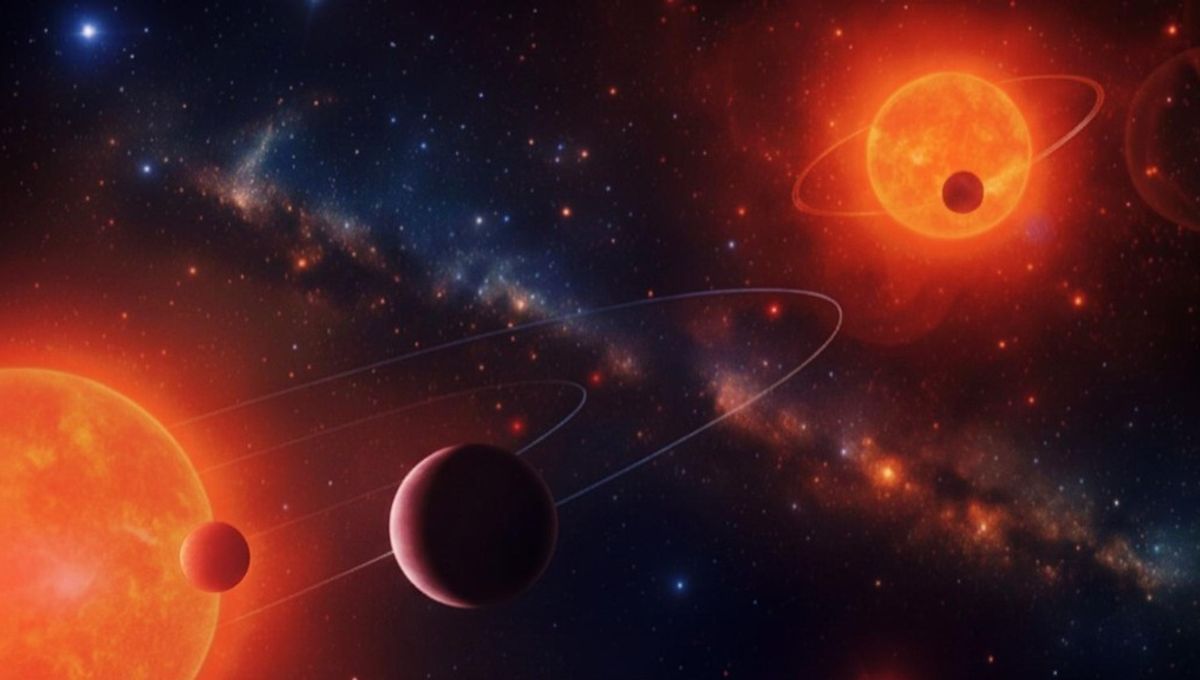
Sci-fi movies and TV shows love to place a planet inside a binary system. In reality, a planet shouldn’t be able go around two stars that orbit each other closely. That configuration should just be too unstable. Unfortunately, someone forgot to tell the universe that it should not happen, because we keep finding them. Now, researchers have found not one, but three planets orbiting a compact binary.
The rest of this article is behind a paywall. Please sign in or subscribe to access the full content.
TOI-2267 is made up of two small and cool stars. The team confirmed the presence of two exoplanets, and there is strong evidence for the presence of a third one. The two stars are not next to each other; they are about 1.2 billion kilometers (745 million miles) away, which sounds like a lot, but that is closer than Saturn and the Sun.
“Our analysis shows a unique planetary arrangement: two planets are transiting one star, and the third is transiting its companion star,” lead author Sebastián Zúñiga-Fernández, researcher and member of the ExoTIC group at the University of Liège, said in a statement. “This makes TOI-2267 the first binary system known to host transiting planets around both of its stars.”
The fact that both stars might have planets, and all three of them are Earth-sized, is an extremely fascinating discovery. And that is not all.
“Our discovery breaks several records, as it is the most compact and coldest pair of stars with planets known, and it is also the first in which planets have been recorded transiting around both components,” added co-leader Francisco J. Pozuelos, a former member of the ExoTIC group and currently a researcher at the Instituto de Astrofísica de Andalucía (IAA-CSIC).
The models of planet formation were originally based exclusively on what we see in the Solar System. The discovery of various exoplanets that do not exist in our corner of the universe has forced us to expand and modify them. Finding even odder configurations allows us to test how planets actually form.
“Discovering three Earth-sized planets in such a compact binary system is a unique opportunity,” explained Zúñiga-Fernández. “It allows us to test the limits of planet formation models in complex environments and to better understand the diversity of possible planetary architectures in our galaxy.”
“This system is a true natural laboratory for understanding how rocky planets can emerge and survive under extreme dynamical conditions, where we previously thought their stability would be compromised,” concluded Pozuelos.
The study is published in the journal Astronomy & Astrophysics.
Source Link: Incredible Planetary System Has Two Stars And Three Earth-Sized Planets